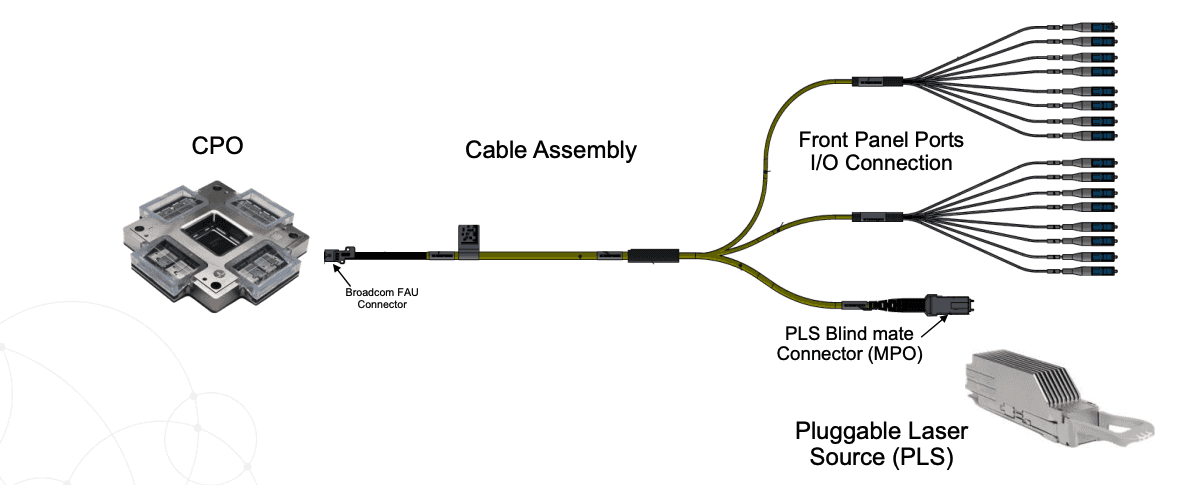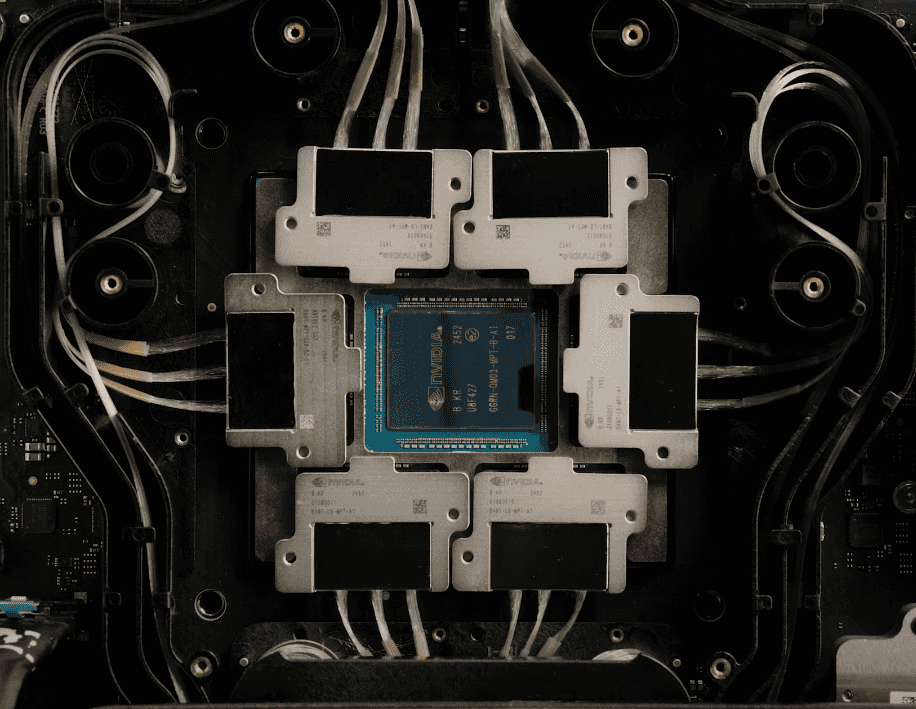ADDRESSING POWER AND HEAT CHALLENGES IN HIGH-SPEED DATA TRANSMISSION: HOW OPTICAL INNOVATIONS ARE REVOLUTIONIZING DATA CENTERS

The Evolution of Networking for AI
We are still buzzing from an incredible week at NVIDIA GTC 2025! My view of GTC is through a networking lens, and there were plenty of awesome announcements that would’ve made even the most stoic network guys happy. The most exciting of these is the move to CPO-based switches for the larger, higher-performance fabrics.
For those less familiar with the network acronyms, CPO-based switches, or Co-Packaged Optics switches, represent a giant leap in networking technology. These switches integrate the switching ASIC and optical assemblies within the same package, a big advantage over traditional pluggable optics based on how they can overcome electrical limitations as data rates increase. This is because CPO-based switches house the optical assemblies with the switching ASIC, which massively reduces component counts, and in doing so, improves latency, enhances reliability, and most importantly, saves power.
AHEAD has been watching the evolution of CPO-based switches and linear pluggable optics (LPO). Where CPO-based switches provide a more integrated and power-saving approach for large-scale, high-performance networks, LPO pluggable optics offer a more power-efficient and lower-latency solution for high-speed data transmission. Between the two, we are starting to see a clear set of paths emerging.
Let’s zoom out for a moment and look at the challenges that got us here.

Image courtesy of Broadcom
The Role of LPO and CPO Technologies
At higher data rates, power consumption and heat dissipation of traditional SFP/QSFP’s become a real issue, especially at scale. Electronics and heat have an adversarial relationship, which leads to reliability problems, and that becomes even more significant in larger systems. Back of the napkin math shows the power budget for just the optics on an NDR-based InfiniBand transceiver for a 128-GPU cluster would consume around 8,700 watts. That is over 75% of a DGX for just optics!
As data rates climb, keeping power and heat under control becomes a major challenge to maintain system reliability, particularly in large-scale deployments. It’s not just about making things work; it’s about keeping them working reliably over time.
Enter LPO and CPO. We expect LPO to gain popularity in the high speed (400G+) enterprise compute space as it has a simplified “pluggable” that requires less power and provides better latency than standard QSFPs.
With CPO, because the switching ASIC and optical assemblies are housed together, all the front panel ports are MPO connectors that lead back to the CPO photonics engine in the switch. CPO helps overcome electrical limitations as we march towards 200Gps SERDES lanes, because of how it improves latency and reliability and, most critically, saves power.

Image courtesy of NVIDIA
LPO & CPO: The Tip of the Networking Iceberg
While CPO and LPO innovations are making a big splash in the networking world, it’s only the tip of the iceberg when it comes to new innovations in the data center. These changes will drastically impact the Data Center fiber plant designs requiring larger MPO trunks and the usage of APC based MPO connections.
AHEAD has incredible engineering talent to help walk you through every design aspect of the data center, including physical infrastructure, compute and storage design, networking, and security. Our engineering team is the best in the business, with the specialized expertise to help inform next-generation solutions, whether that’s a new data center build, a high-performance AI/HPC cluster, migration to a hyperscaler, or helping to guide strategy to prepare for innovations to come.
About the author
Michael Balasko
Principal Specialist Solutions Engineer
Michael Balasko is a Principal Specialist Solutions Engineer at AHEAD specializing in Data Center networking with a focus on Ethernet and Infiniband Solutions for AI Clusters. He recently attained his NVIDIA NCP-AI Network Professional Certification.

 ;
; ;
; ;
;